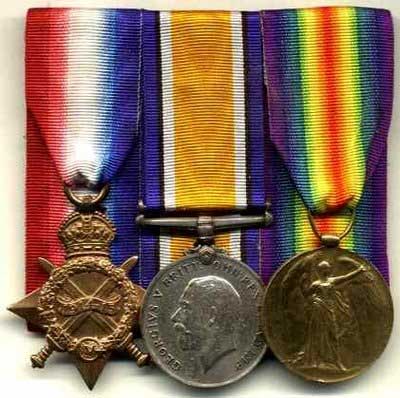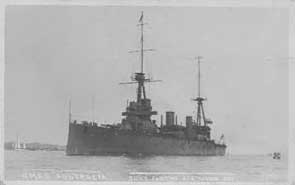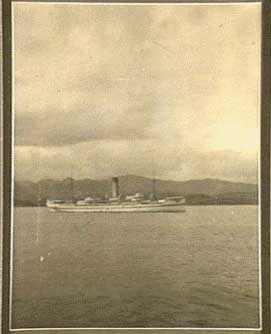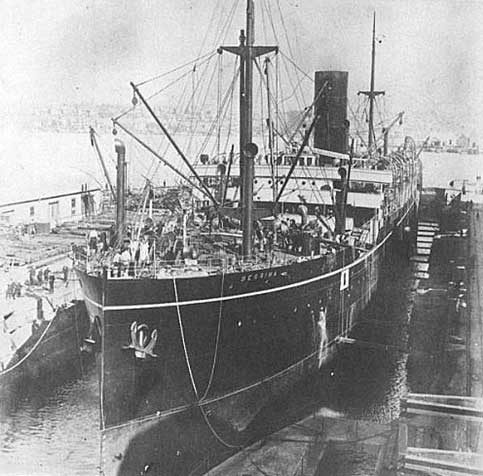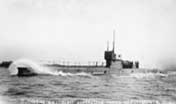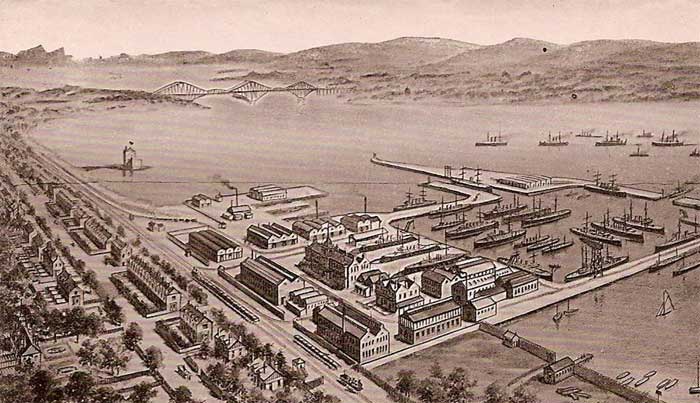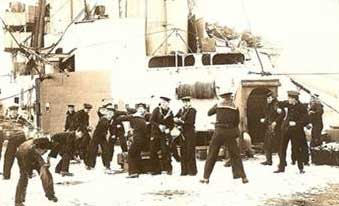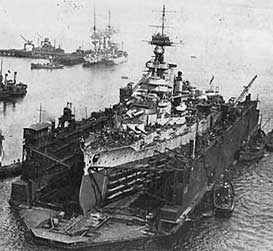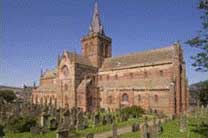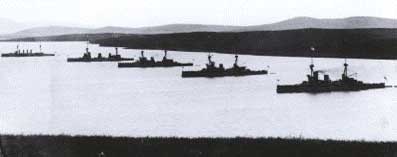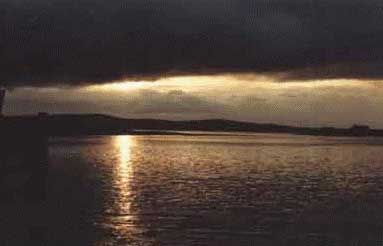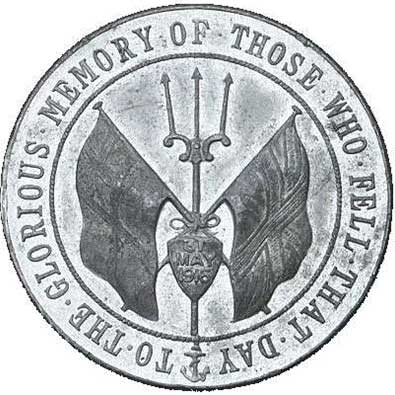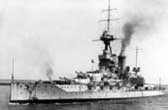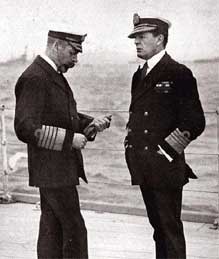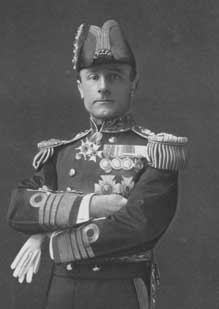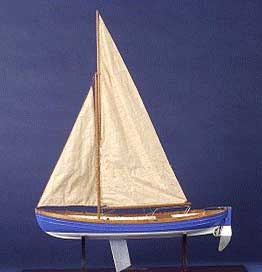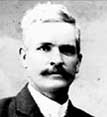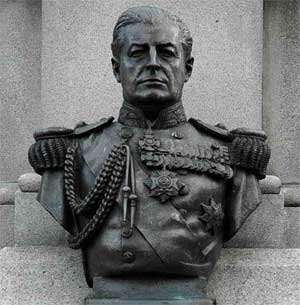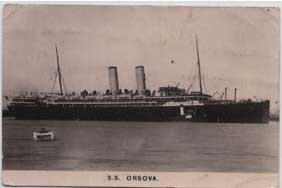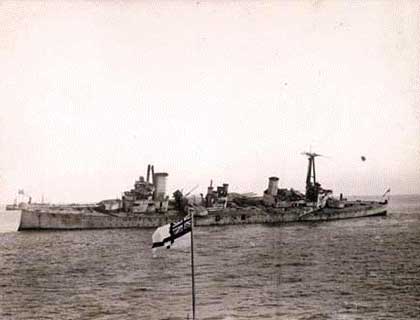|
Extracts from James Dixon's Diary, a WW1 sailor serving in HMAS Australia, flagship of the RAN
Dedication He served in the Royal Australian Navy from 1913 to 1919, and spent WW1 in the RAN's new Battle Cruiser HMAS Australia 1. This work has only been possible on two counts:
It is my earnest hope it will continue to remain in the possession of his daughter, and three grandchildren, and one great grand daughter, as a testament to a good humoured sailor whose integrity was never in question. James served his country with both dedication and dignity in the Great War.
Introduction.
Although I believe it was illegal, he maintained a hand written diary over his six year stint in the service. It passed at his death to his only child, Joyce Harvey a long standing friend, who has recently trusted me with her precious document so I may make extracts from it, and upload them to my Web Site: AHOY. Mac's Web Log, to ensure they are not lost to posterity. James Dixon's Diary: Scan of page 186, the article continues below. WW1 service men and women have died, and with them their stories that helped to shape our nation in its early days after Foundation of the Commonwealth of Australia on January 1st. 1901. I strongly believe that a record such at this one from James deserves to be preserved, hence this attempt to pay tribute to a young RAN sailor who soon found himself and his ship mates serving in the unforgiving North Sea, far from home and family,with the ever dreaded coaling ship always looming close by. James joins the RAN. HMAS Australia 1, Battle Cruiser.
James Dixon as a very young seaman, now joined this pride of the Australian Fleet on November 19, 1913. War and service in New Guinea. Now the flagship sailed off to Noumea, another coaling and the escort of two New Zealand troopships to occupy German Samoa. These days we tend to forget how active Germany was in our Australian sphere of influence prior to WW1, in New Guinea and around many islands in the Pacific. Australia sailed from Fiji in company with HMAS Melbourne on September 2, 1914, to rendezvous at Rosiland Island with Submarines AE 1, AE2, Encounter, Sydney, Parramatta, Warrego, Swan, plus the trooper Berrima, with members of the volunteer Australian Naval and Military Expeditionary Force ( ANMEF ) on board, Grantala a hospital ship, and colliers to total 14 ships in the convoy.
Their destination Rabaul to capture the German wireless station. Both Herbertshohe and Rabaul were secured by this force.
Our Submarine AE 1 disappeared off Rabaul on September 4, and her wreck has still not been found in 2008.
Prisoners from the fight at Rabaul were taken onboard HMAS Australia, after spending time in the NG area, the ship sailed for Suva arriving on October 12. The inevitable coal ship found 1,700 tons loaded between 1330 ( 1. 30 PM ) and 0300 ( 3 AM ) the next day, the flagship had an extreme appetite for consuming coal, between October 15, and November 3, James records no less than 7 coal ships, taking into her bunkers 9,624 tons. Eastwards. Close to the Panama Canal, the Japanese cruisers parted company. The canal was closed to ships over 430 feet long and drawing over 24 feet, thus Australia needed to round Cape Horn to reach the South Atlantic. In rough weather and early into the New Year of 1915, Australia arrived in the Falkland Islands at Port Stanley. Britain colonises Falklands.
German Supply ship. Off to England via St Vincent. What an adventure for the young James, here he is, his country at war with Germany, he is serving in his Navy's new Battle cruiser, and now he has arrived in the "Old Country" In those days the Australian population was very much tied to Britain's apron strings, and Britain was "Home." Both my parents were English, and I had been born at Geelong, but my Mother always wanted to return " Home to the Mother Country." Before the cinemas started to show a film, the anthem "God Save the King" would be played, and the audience stood. They were very different times to the ones we are now living in today in Australia. At Plymouth, the ship docked and naturally coaled ship, 2,300 tons were required to fill her bunkers. Now Australia made her way up the English coast, with a new experience, snow falling, to anchor in the Firth of Forth on February 19.
There was a frenzied time of both cleaning and painting ship in preparation for the visit of King George V on February 27, and all hands marched past His Majesty. Before the Regal visit, all were issued with a postcard depicting both the King and his Queen, a normal action in those days, unlikely by the year 2008.
Routine of exercises, coaling and cleaning ship. Snow to a depth of 4 inches covered the upper deck, and Australia's company must have yearned for some of the sunshine available back home.
Death of crew.
Dull Routine. Mid July, the ship was near Iceland in very cold weather, joined up with the Grand Fleet briefly for the inevitable exercises at sea, but the Fleet soon departed. Off Iceland at this time of year, day light lasts almost all night, but now back to harbour. On July 8, hands were landed ashore from each ship to attend a lecture by the Archbishop of York, James makes no mention of the subject, I assume he did not attend. Floating dock at Invergordon. July 22, all on board again and the ship sailed for Scapa Flow to anchor there the following day. Some gun firing using both the 12 and 4 inch armament. After coaling ship, James reports that Leading Seaman Peebles dropped dead, he had a growth on his heart.
Torpedoes fired. In the event, after getting under way, the ship sighted the missing fish and recovered it, all breathed a sigh of relief. I qualified as a Torpedo Anti Submarine specialist in RN schools post WW2. I had spent all of 1947 and the early months of 1948 at Royal Navy schools scattered over the British Isles qualifying as a TAS Specialist Officer. On my return to Australia I was appointed to the Tribal destroyer HMAS Warramunga as Flotilla TAS Officer on the staff of Captain D. It was usual to perhaps fire one or two torpedoes in practice per year, but not for my Captain, he ordered the full outfit of 8 torpedoes to be prepared and fired. No sooner had the last one been squirted off when he demanded, " Tell me on what bearing, and how long before you expect the first torpedo to surface, and it plus the other seven had all better come up." I did a quick calculation in my head, and responded " On green 20 ( ie 20 degrees on the starboard bow ) 3.5 minutes SIR! " Those were the longest minutes I ever spent on the bridge of a warship. But close enough and on time up popped No. 1 to be thankfully followed by its 7 mates. Well said my Captain," Don't just stand there be off and collect them." I certainly knew the fear of losing a torpedo under practice conditions, but was pleased all turned out well, but I digress. Leading Seaman Peebles buried ashore at Scapa Flow.
August to December 1915. On August 15, all hands fell in for the presentation by the Admiral to Able Seaman Kinniburg of a Distinguished Service Medal , awarded as a result of the battle between the German Cruiser Emden, and our HMAS Sydney. He had gathered up burning cordite to throw it over the side, but had been badly burned himself. The Admiral's speech is reported as very good, he finished by calling for " Three cheers for the Empire. " Although the light cruisers, destroyers and the 1st. Battle Cruiser Squadron all go to sea, Australia stays moored under harbour routine. Now Admiral Jellicoe visited the ship on September 28, its back to Scapa Flow for the inevitable torpedo and gun exercises, another somewhat dreary month gone, and by October 8, the ship is back at Rosyth. In harbour it was often the practice to rig anti torpedo nets to protect the ship's side from an enemy torpedo firings. November dawns and with it snow, landing parties are regularly exercised ashore, but Australia does not spend too much time at sea, but close to the month's end, all the Battle Cruisers are at sea, exercises for gun crews, and up to Scapa Flow, but soon the Firth of Forth beckoned arriving there on December 8.
One imagines that both the ship and her crew longed to visit new ports, to vary the monotonous grinding routine of exercises both in port and at sea, coaling ship, cleaning up and painting the super structure ravaged by the coal dust.
I remember Scapa Flow. For me, Scapa Flow always invoked a feeling of mystery, as if it were withholding secrets, but you were never going to unveil them. I enjoyed the rugged terrain and the wilderness that obtained, and can still cast my mind back to those quite momentous days of 1940. Christmas day 1915 in harbour. Cake with tea at 1530 ( 3.30 PM ) In WW2 when I too was serving in UK waters in HMAS Australia 11, mail arriving very infrequently made it a truly wonderful day. Now it is 1916. Now and then James writes that the ship took in oil, it must be that oil is used to augment the supply of coal. An announcement posted on the notice board read" The Commonwealth regrets that parcels for the ship's company went down when Geelong collided in the Mediterranean with another ship." This loss would have been a blow to morale. Australia spent a good deal of time in harbour at short notice for sea, thus all had to stay onboard, no leave, no sport ashore, no landing parties ashore for training. January 26, Australia at sea as part of the 2nd. Battle Cruiser Squadron, screened by a host of destroyers, on return to Rosyth leave is to be granted, and cap ribbons of two Depots, Victory, Vivid, plus HMS were issued for the crew to wear on leave. In WW2, the Royal Australian Navy issued HMAS cap ribbons instead of ship names on ribbons. Back in harbour by the month's end, and prior to anyone going on leave the Captain warned his ship's company not to talk when ashore about any of the ship's movements. On February 1, off to South Shields at Newcastle to enter a floating dock. On Leave. Return to the grind. Visiting the Front. Quarantine. Often thick fog was about, and it made fleet manoeuvers both difficult and dangerous. Several days were spent at sea in support of the Harwich Force ( about 18 destroyers ) gun crews in Australia at General Quarters for long periods, 26 hours in one spell. The light cruisers and their destroyer escort are always off to sea, then return to the harbour at Rosyth. Coaling, cleaning, painting the ship take up an inordinate time for the ship's company, otherwise its route marches ashore, evolutions in harbour, for the crew, out nets, in nets, away all boats, pull round the Squadron, it seems that these tasks were ordered to keep all occupied. Very little contact with the enemy. April 22nd. prepare for sea, out with the fleet, the BC New Zealand in heavy fog rammed Australia on her starboard side, off she steamed only to cross the ship's bow and be hit by Australia close to her A turret. The ship now docked at South Shields again, both port propellers were chipped, but this Dockyard were unable to fix that problem, and Australia sailed south to the Thames, and then on to Plymouth by May 4, here 11 days leave was granted. May 29, the ship undocked and two days later sailed with 2 destroyers west about Ireland and back to Scapa Flow. On June 3 news reached the fleet of a large naval engagement and three Battle Cruisers and other craft were sunk. This of course refers to the Battle of Jutland where the Battle Cruisers Indefatigable, Invincible and Queen Mary were all sunk, in addition 3 cruisers and 8 destroyers were lost.
Casualties were horrendous, killed 25 Officers and 5,769 sailors, 485 wounded and 165 POW's. On the German side, 1 Battle Cruiser, 1 pre-dreadnought Battle Ship, 4 light cruisers, 5 torpedo boats all sunk. 2,115 sailors dead, and 80 wounded.
Who was the victor at the Battle of Jutland?
King George V visits HMAS Australia again. The rest of this month was spent in harbour. July dawned and 53 tons of blue metal was loaded, to be placed around the ship's magazines. Rain was prolific this month, interestingly a work party from the ship was sent off to the Lion, in dock, they were put to work chipping the paint work rust, and then repainting her. I would have thought there was enough maintenance aboard their own ship without having to go off and work on a thought there was enough maintenance aboard their own ship without having to go off and work on a Royal Navy ship, but there is no note of dissent in James diary. On July 20, the Bishop of London at a muster of the ship's company offered up a prayer that should Australia see action, the crew might come through the experience all right. In my cynical way, I am sure that made everyone involved feel fine, a prayer will fix it all! No action casualties. Back to Scapa the next day, 10/11 days of target practice shoots at anchor, and out in Pentland Firth, back to the Forth by the 17th. The next day off to sea again with the 1st. and 2nd. Battle Cruiser Squadrons each of three battle cruisers and Australia part of the 2nd. BCS, later the Grand Fleet joined them. The Germans are at sea, reportedly some 20 miles off, Nottingham is sunk by a torpedo, now at 1430 ( 2.30 PM ) the enemy is in sight, James reports seeing 2 or 3 of the German Fleet. Falmouth picked up a torpedo, but can steam off to Newcastle. That evening an enemy torpedo attack developed, but all missed their targets. The Battle Fleet were never close enough to properly engage the enemy ships with gunfire, all to no avail, and by the 20th. all ships were safe and snug back at Rosyth. A gun loading competition was held, and surprise, surprise, it was won by the Stokers. Censorship of outgoing mail introduced. Censorship of sailor's outgoing mail was introduced in late August 1916, I do not know why it took two years of war before this measure was taken. September 4, went to sea with two other battle cruisers, light cruisers and destroyers, a floating mine was sighted on the port bow in foggy conditions but was happily avoided. Back at Queensferry by the 6th. coal and clean ship, on occasions picture shows are held on the upper deck, but the titles shown do not get a mention. After presenting prizes for a boxing competition, the Admiral spoke about the Battle of Jutland, he believed it was but half of the battle, and thought the other half was still to come as the German Fleet would have another go. In hindsight we know he was wrong, as the German Fleet never ventured out to sea again. September 22, a number of Australian soldiers came aboard, for what purpose is not noted. September 30, 1st. and 2nd. Battle Cruiser Squadrons to sea, a new airship was flying close to Australia on her starboard side.
October 1 at Scapa Flow, high angle gun crews closed up for a possible German Zeppelin raid, but it did not happen. In wartime, a great deal of time is spent at one's action station in case an event comes to pass, more often than not it turns out to be in vain, but the Captain cannot take any chance on not being ready for all possible circumstances. Sub Calibre target practice both under way and at anchor at night using searchlights to illuminate the target. On the 7th. the 12 inch main armament each fired 6 rounds out in Pentland Firth,
Then both BC Squadrons sailed for the Forth to arrive by October 10. Winter clothing was issued on the 17th.. November 1 found both BC Squadrons at sea, with Australia's Squadron scheduled to attack the 1st. BCS, and James reports that his group were reported as the winner. The 3rd. found both groups back in harbour. The Chaplain General of Australian Troops came onboard to address the ship's company he related about Australian troops on duty and ashore, he said that the Australian people are very proud of the Navy for what they have done and are doing. The Admiral added his bit and called for three cheers for the Chaplain, who later talked to Western Australian members aboard Australia. No doubt all designed to keep up morale, I do not think that back home, the Australian people would have much idea of what their Navy was doing or may do, but it sounds good. Another sailor dies. HMAS Sydney arrived on November 16. On November 28, James notes a change of command in the Grand Fleet, with Admiral Sir David Beatty taking over from Admiral Sir John Jellicoe. James now had some leave, crossing over the Forth bridge in both directions, but how long he had, or where he eventually went is not recorded. Captain Ratcliff was replaced by Captain Backhouse. Christmas Day 1916. Rear Admiral Levison the Admiral in command of the 2nd. Battle Cruiser Squadron on January 7 1917 inspected all hands at divisions, he told his crew he was aware that Australia took a leading part in the capture of German possessions in the Pacific. At this time, snow is prolific around and on the ship. January 13, all the Battle Cruisers, light cruisers and attendant destroyers are at sea, but only for a very short time, back in harbour in 2 days. Australia's cable party must be very good at coming to anchor or securing to a buoy, they get so much practice in both areas. Battle Honours painted on ship's fore superstructure. By the last day of January, the fleet had sailed again for Scapa Flow, exercises there as usual until February 9, this time streaming paravanes.
The paravane was a device developed to destroy naval mines. It was strung out and streamed from a towing ship. If its wings or the tow cable snagged the cable securing a mine, then the mine and the paravane would be brought together and the mine exploded harmlessly. The cable could then be retrieved and a replacement paravane fitted. By WW2 the paravane had been refined, one each side of the ship was towed from a shoe lowered down the ship's stem. Each paravane carried cutters designed to cut any mine mooring rope that the towing cable directed into them. The severed mine now floated to the surface and could be blown up by gunfire, thus not damaging the paravane, and it did not need to be replaced. In HMAS Shropshire I often streamed and recovered her starboard paravane.
The fleet had returned to the Forth by February 10. Sunday February 18, the new Captain at divisions asked a number of individual ratings what they thought of the Navy, unfortunately the responses are not recorded, but would a sailor tell his Captain what he really thought? Whenever at Rosyth there seems to be a lot of moving from anchor to moor at a buoy, then back again, I just wonder if these moves are designed to keep the hands occupied, or is it an example of very poor planning by the Port authorities who don't really know where to secure ships. Of course there is a great deal of leaving and reentering harbour by the light cruisers and their destroyers, but the Battle Cruisers do not spend much time at sea. If the German Navy stays put, snugly in port, there is really very little for the Grand Fleet and the Battle Cruiser Squadrons to achieve anyway. It comes down to a matter of trying to keep up morale, whilst the continual coaling, cleaning and painting ship must become dreaded exercises for all concerned. A lovely entry for February 29, at 1130 ( 11.30 AM ) the hands were paid, and with new notes. March 1, the usual harbour routine, then out to sea at 0715 ( 7.15 AM ) on the 12th. sub calibre shoot and some 4 inch gun firings, but soon back to anchor by the Forth bridge by lunch time. On to March 16, clear lower deck to have the Captain tell his crew about having to cut down on food, that could in no way assist morale. March 24, off to Scapa Flow arriving the next day, torpedo firing, just exercise after exercise, it seems to fill in the days. April 4, a full calibre 12 inch firing planned with New Zealand, a Battle Cruiser in the same Squadron, at sea a mist developed so back to harbour, the mist cleared, out to sea once more, it was snowing as the ship anchored on her return. Now back to the Firth of Forth with the usual coaling, cleaning ship and painting well to the fore. On the 25th. the ship's company voted for the Australian Federal election, not sure being so far away from home that anyone would have much idea of what the various parties standing might have to offer. Perhaps individuals had a party of choice and just voted accordingly. 29th. to sea, but back the next day after a rough trip with high seas running. April 6, a copper medal presented by the Admiral to one of the Midshipman, the medal from the King goes to a Midshipman selected by the ship's officers and the Captain. It is supposed to be gold, and after the war the copper one will be replaced by its gold counterpart. Very little to report for most of April, on the 22nd. American journalists came on board. Some sailing was done using the ship's cutters, and James enjoyed that activity. May arrives, and little is recorded for the month. Mid June, off to Scapa arriving on the 14th. more sailing, James in the cutter, the crew landed, had dinner, lit a fire " To boil the fanny ( navalese for a billy )" Back at the Firth of Forth by the 21st. July. On Sunday the 8th. James and 4 shipmates took away a whaler ( a 27 foot boat that could be rigged with a foresail, and a mainsail ) leaving the ship at 1000 ( 10 AM ) they were due back at 1700 ( 5 PM ) but actually did not arrive until 2015 ( 8.15 PM ) and all the crew were cautioned.
Now in mid summer, cricket, football and swimming parties go off ashore almost daily. 16/17th. to sea and return. Last day of the month, to sea and back routine after some gun exercises. August 5, a notice calls for volunteers to man Imperial Submarines. Diary skips some months. An aircraft on board.
Sopwith 1 1/2 Strutter biplanes were introduced with the battlecruiser HMAS Australia being the first ship to operate this aircraft in April 1918. Despite or may be because of its apparent successes, the RN once again lost its Air Service. On the 1st April 1918, the navy and army air wings were merged once again, this time to form the Royal Air Force. (RAF). To sea again on the 19th. with the 2nd. BCS, next day to meet up with the light cruisers and their destroyers, the task to protect convoys to Norway from Scotland and from Norway to Scotland. It is interesting to note that in WW1, Britain did not introduce the convoy system until the first outgoing convoy from Britain on September 7, 1917. But in WW2 she had learned the efficacy of convoys from WW1, and they were quickly put in place after war was declared on Sunday September 3, 1939. Another Christmas Day. 1917. To sea on the 27th. for convoy duties, and on the 30th. a submarine was reported, James notes: " The Captain dashed to the after battery to give the gun's crew a range and bearing to use for firing at the submarine's wake." Two destroyers went after the contact with depth charges, but no result, the fleet sailed on to Scapa Flow and coaled ship on arrival. No record from January to February 18, 1918. 18th. to 23rd. convoy work with 40 merchant ships in very rough weather. We now jump to March 25, convoy work to wind up at Scapa Flow on the 29th. and loading 1,500 tons of coal in rough weather, the collier alongside parting her securing hawsers, finished this task after a long struggle. Now on to April 16, firing all weapons, and going to sea with the 2nd. BCS for additional convoy work to coast of Norway. I would judge that the protection of convoys would be a welcome chore after all the mind numbing exercises many in harbor over several years of war. April 10, Andrew Fisher, three times Prime Minister of Australia, and now the Australian High Commissioner in London, and in charge over the last two years of WW1. He came on board with Rear Admiral Booth representing the RAN in London.
The ship's company marched past and Fisher addresssed the troops. 21st./24th. convoy duties at sea, with another convoying stint at the end of the month. May. In and out of harbour for several times this month. Some of Australia's crew had volunteered for the Zeebrugge raid, and they were addressed by Admiral Sir David Beatty on board Queen Elizabeth.
Zeebrugge raid April 1918. The attack went in on the night of 22-23 April, under the command of Commodore Roger Keyes. Vindictive was heavily hit on the approach, and came alongside in the wrong place. Despite much bravery by the landing party, the battery remained in action. One submarine did succeed in blowing up the viaduct, but the first block ship was badly hit and forced to ground before reaching the canal entrance. Only two (Ipheginia and Intrepid) were sunk in place. Much was made of the raid. Keyes was knighted, and 11 Victoria Crosses were awarded. The Germans, however, made a new channel round the two ships, and within by mid-May.
June. July. The aircraft sent up to do some spotting of the fall of shot, then back to Queensferry where King George V visited ships in the fleet to present medals, including two Distinguished Service Medals to Leading Seamen Busto and Stapel who took part in the raid on Zeebrugge. Much was made of this event that really did not warrant the outcome there. All a bit like the Gallipoli landings, where once again failure was hailed as a great event. August. August 22 at sea, but back in harbour by the 24th. August 27, a boat's crew from Australia challenged one from Lion to race over 2 miles for a 400 Pound stake, a great deal of money at that time, and the Australia crew were victorious. The month ended with a stint at sea, then coaling, cleaning and the inevitable paint ship. September. The Commander also going was short and sweet, saying I am also leaving: " Ship's Company quick march." Off to Scapa Flow again by the 8th. drills and exercises there till returning to the Firth of Forth by 25th. Next day at sea to meet 6 United States mine layers, escorted by 12 destroyers, the layers put down their deadly cargo and back in harbour by the 28th. Last day of the month at sea to meet with the Grand Fleet, and Bulgaria has surrendered unconditionally. October. At sea next day to meet the Mine Layers coming down from Scapa Flow, and they laid another mine field, James reports the mines on board the layers bumping down their rails prior to be being pushed off the stern, make an awful rumbling noise. The aircraft flown on the 8th, but had some engine problems to crash in the sea, injuring her pilot. At Scapa, the US 6th. Battle Squadron is in harbour, and all went off to sea on the 14th. The word is that 3 heavy enemy ships are out ( in my Navy days, any rumour that reared its head in the mess decks was called the BUZZ, people would gather and ask: WHAT'S THE BUZZ? ) The 3rd. Light Cruiser Squadron is leading, the 2nd. Battle Cruiser Squadron steams 6 miles astern of them, and the US 6th. Battle Squadron bringing up the rear, some 8 miles further astern. Action stations sounded off whilst the mid day meal was in progress, turned out to be a British ship, Prince Arthur, and back to Scapa. 18th. the 2nd. Battle Cruiser Squadron staged a sailing regatta, the ship's pinnace came in 1st, and her whaler 2nd. 22nd. the aircraft flown off, and a torpedo was fired. Fun and games on the 24th. too rough to come to her buoy, Australia let go her starboard anchor, but the cable parted, and the port anchor was quickly let go. Suprisingly there is no mention of trying to recover both the cable and the starboard anchor. 27th. back to Scapa and the flag is transferred to New Zealand, on the 28th. announced that the ship's company will go on leave with a care and maintenance party left on board on return to the Forth. James is off and visits Lancaster, Cardiff and Birmingham, he was on leave when the Armistice was declared on November 11, 1918. To quote him: " The people nearly went mad with excitement." His leave was up the next day, on the 17th. a Special Thanksgiving Service for the war's end was conducted. Off to sea to meet surrendered German High Seas Fleet. November 21. out to sea with the Grand Fleet to meet up with the surrendered German High Seas Fleet at 1100 ( 11 AM ) This must have been a great occasion, worth all the agony of those coaling, cleaning and painting sessions over four long years, at last it was all over, and we had won the fight. On the 24th. the Squadron of the Grand Fleet passed close to the 2nd, BCS, as they steamed towards Scapa Flow. December 3, and James is on his way home to Australia. James left his ship on December 3 for Devonport Barracks, a month's leave to join Orsova on January 8th. The ship is carrying 1,500 troops, 150 passengers and 100 Sailors for the trip to Australia.
By the 12th. they were off the coast of Portugal, through the Mediterranean to Port Said on the 19th. traversed the Suez Canal, the Red Sea and Colombo by February 1st. Home to Australia at last on arrival at Fremantle on the 11th. across the Great Australian Bight to Port Adelaide on February 18th. The Orsova entered Port Phillip Bay and James was placed in quarantine at Portsea on the 20th. for a week. It turned out to be quite a paradise, and James is ecstatic, plenty of sleep, good meals, beautiful weather, it was just glorious. What a contrast to years of Scottish weather, cold, rain, fog and of course snow in winter. He did a lot of swimming, fruit and cigarettes issued daily, pictures turned on at night. Into a spray room each day to cope with any germs he may be carrying, but James could have taken another such week at anytime. On February 27th, by car to Melbourne, and James made his way to the Williamstown Naval Depot where his saga had begun 6 years earlier, here he received his discharge papers, and said goodbye to life in the Royal Australian Navy. Two months leave, and his Official Discharge dated, May 2, 1919. Conclusion. The single thing that has impressed me about James is the fact, that despite his mind numbing routine, and repetition of events over a very long period of time, there is not a single word of dissent written, not one complaint, he met every challenge to do his duty to his ship, his country and above all to himself. He had passed his examinations for Petty Officer, but did not stay long enough in the Service to be promoted, and that is a pity, he obviously had leadership qualities of a high order. Without the ability and leadership of its Petty and Chief Petty Officers the Navy will never prosper. I would have liked to have known you James personally. SIR, I SALUTE YOU! Mackenzie. Gregory.
She was towed to sea by tugs and sunk along with her main armament in position 095 degrees, 24 miles from Inner South Head, Sydney, on 12 April 1924. Prime Minister Stanley Bruce provided a heartfelt eulogy that was widely reported on the night after her sinking:
|

